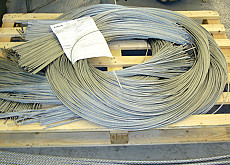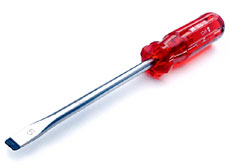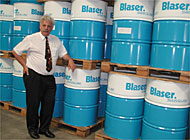Jakob wires up the world in modern designs

Trubschachen in the heart of Switzerland's rural Emmental region might seem an odd place for a thriving industry that started life making rope for local farmers.
But rope-making from hemp at the Jakob company has developed over the past 100 years into the production of wire rope, not only for ski lifts and the construction industry, but also with increasing success for modern architecture.
Whether it’s in the two-year-old Paul Klee art centre in Bern, the MFO-Park in Oerlikon, Zurich, which is the world’s largest pergola with 25km of ropes and fittings for 1,200 plants, Jakob plays an important role.
Bangkok Airport in Thailand recently took about 300 tons of the company’s products, while Jakob was also behind an installation on one leg of the Eiffel Tower in Paris that prevents would-be climbers.
“One of our departments is in the shackle and lifting business – ropes, slings and fittings for construction, forestry, ski lifts and general industry,” owner Peter Jakob told swissinfo.
Architectural products
“But two-thirds of the business today is done with architectural products. These are stainless steel ropes with fittings for balustrading, suspension rope shelving, zoo cages and so on,” he added.
Stainless steel rope has become very popular because of its size and performance. A four-millimetre rope can carry about 800kg, whereas a rod has to be twice the size to bear the same weight.
By using a rope and fittings, architects can create more transparency and light inside rooms.
Jakob only came out with a catalogue specifically for architects and metal workers in 1988 and only started exporting in 1991.
“At this time we didn’t know much about the rest of the world but today we are very open-minded and that’s one of the reasons why we also have a production unit in Vietnam making stainless steel mesh.
“Trubschachen is still very important for us and one day we’d like to be able to show both inside and outside our headquarters what we really produce.”
Fast reaction
Compared with many other companies, Jakob is small and that’s an advantage when it comes to reacting fast to new trends or demands.
As Jakob puts it, his company has a flat hierarchy which means that decisions can be made before other firms have even formed a working group to study a case. And there’s another advantage in being small.
“We have no shareholders who are just waiting for money at the end of the year so if we feel there is something we want to do we don’t have to ask anyone outside the company and this is a huge advantage,” Jakob said.
He admits that making rope is not that complicated, particularly if you have been doing it for a long time and have learned from past mistakes. The battle in this business seems to be from doing the best in marketing.
“In every house, there would be applications for our products and so that means we have to make sure that designers, architects, landscapers, interior architects think about the possibilities of using ropes.”
Secrets?
To an outsider, the Jakob factory doesn’t seem to have too many company secrets but there are a few, which an outsider would not see because they are hidden in the know-how.
“It may be a special technology to fix a fitting on a rope so that the breaking strain is very high all the time… you don’t get to such a point by simply pressing one button.”
While the company has about 60 people at its headquarters, only six are needed to make the wire rope – about 500 tons a year.
A strategic decision was taken some years ago not to expand rope production, although Jakob is keen to keep the rope-making know-how and takes on one or two apprentices to learn the business.
The picturesque village of Trubschachen, which has a population of around 1,500, looks set to remain the home of Jakob for a long time to come.
“We think it’s a good place to be and we have been here for 103 years. We belong here and there’s never been any intention to go away,” Jakob said.
swissinfo, Robert Brookes in Trubschachen
The Jakob company traces its history back to 1904 when it started life as an agricultural store selling cattle feed, fertilizer and rope.
It first made ropes out of hemp and has been in the wire rope business for 70 years.
It did not begin to export its products until 1991. About two-thirds of the more than SFr20 million ($16.3 million) annual turnover comes from its architectural products.
The picturesque Emmental village has two main employers – the Jakob company and Kambly, a household name in Switzerland for its fine biscuits.
The village culture association has over the years staged a number of major exhibitions of Swiss artists.
A “sister city” of Trubschachen is Midway City in the American state of Utah, where a large number of Swiss settled around the 1880s.

In compliance with the JTI standards
More: SWI swissinfo.ch certified by the Journalism Trust Initiative


You can find an overview of ongoing debates with our journalists here . Please join us!
If you want to start a conversation about a topic raised in this article or want to report factual errors, email us at english@swissinfo.ch.